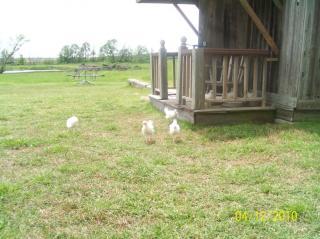so i found my first goose egg today! i would have left it out there so she could lay more and sett, but it was in the middle of the yard so i took it in and want to collect a few more from her to incubate... hopefully after she lays a few she'll build a nest and lay a clutch of her own.. but until then im going to colect a few to incubate.. but i have nver incubated geese and want to learnall there is to know.. i have a rcom 20.. so does anyone know how many goose eggs will fit in the rcom.. and if u can send me links on how to incubate goose eggs i would apprietiate it... im exited









